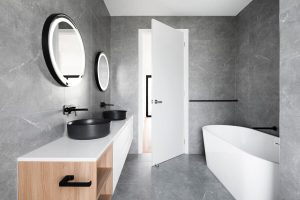Introduction
When it comes to choosing the perfect siding for your home, you’re faced with a plethora of options. Two popular choices are Dutch Lap and Clapboard siding. Each has its unique characteristics, and the decision can significantly impact the aesthetics and functionality of your home’s exterior. In this article, we’ll delve into the key differences between Dutch Lap and Clapboard siding, helping you make an informed decision for your next home improvement project.
Understanding Siding Options
Before we dive into the specifics of Dutch Lap and Clapboard siding, let’s take a moment to understand the importance of siding in home construction.
What is Dutch Lap Siding?
Dutch Lap siding is a traditional style of horizontal siding that adds a timeless charm to homes. It’s characterized by its beveled profile, which creates a distinctive shadow line and a textured appearance.
What is Clapboard Siding?
Clapboard siding, also known as beveled siding, is another classic choice for homeowners. It features long, narrow boards that overlap horizontally, creating a sleek and straightforward look.

Comparing Dutch Lap and Clapboard Siding
Now that we have a basic understanding of these siding options, let’s explore the critical differences between Dutch Lap and Clapboard siding:
1. Profile and Aesthetics
Dutch Lap siding offers a more pronounced shadow line due to its beveled edge. This gives your home a textured, rustic appearance that appeals to many homeowners seeking a traditional look. On the other hand, Clapboard siding has a smoother surface with less shadowing, providing a cleaner, more contemporary appearance.
2. Installation Complexity
When it comes to installation, Dutch Lap siding can be more challenging due to its beveled profile. Precise measurements and angles are essential to ensure a seamless fit. Clapboard siding, with its simple, overlapping design, is generally easier to install, making it a preferred choice for DIY enthusiasts.
3. Maintenance
Both Dutch Lap and Clapboard siding require regular maintenance, including painting or staining. However, Dutch Lap siding may accumulate dirt and moisture in its beveled grooves, necessitating more thorough cleaning. Clapboard siding’s flat surface is easier to clean and maintain.
4. Cost
In terms of cost, Clapboard siding is often more affordable than Dutch Lap siding. The materials for Clapboard siding are typically less expensive, making it a budget-friendly option for homeowners.
5. Versatility
Dutch Lap siding’s textured appearance can provide excellent insulation and soundproofing, making it a suitable choice for homes in noisy areas or regions with extreme weather conditions. Clapboard siding, while not as insulating, offers a sleek look that can complement a wide range of architectural styles.
Making Your Decision
Choosing between Dutch Lap and Clapboard siding ultimately depends on your preferences, budget, and the architectural style of your home. Consider factors such as aesthetics, installation complexity, maintenance, cost, and versatility to make an informed decision.
Conclusion
In the world of home siding, Dutch Lap and Clapboard each have their unique charm. Whether you prefer the textured, rustic look of Dutch Lap or the clean, contemporary lines of Clapboard, your choice will significantly impact your home’s appearance and functionality. Take your time, weigh the pros and cons, and consult with a professional if needed to ensure you make the best decision for your home.
FAQs
1. Is Dutch Lap siding more expensive than Clapboard siding?
Dutch Lap siding is generally more expensive due to its unique profile and aesthetics.
2. Which siding option is easier to maintain?
Clapboard siding is easier to maintain, thanks to its smooth surface that is less prone to dirt accumulation.
3. Can I install Dutch Lap or Clapboard siding myself?
While it’s possible to install both types of siding as a DIY project, Clapboard siding is considered easier for amateur installers.
4. Does Dutch Lap siding provide better insulation?
Yes, Dutch Lap siding’s textured appearance can provide better insulation and soundproofing compared to Clapboard siding.
5. Can I paint or stain Dutch Lap and Clapboard siding in different colors?
Yes, you can paint or stain both types of siding in various colors to match your home’s aesthetic preferences



